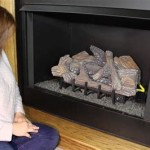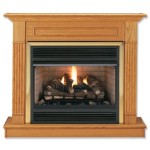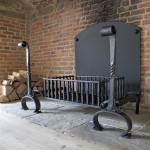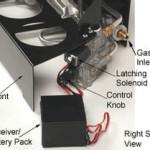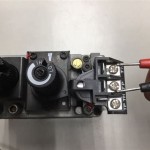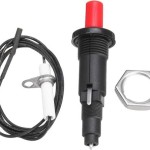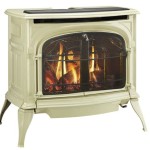Mounting a TV Above a Gas Fireplace: Considerations and Best Practices
The increasing popularity of open-concept living spaces has driven a trend towards maximizing functionality and aesthetics. A common design choice that arises is the decision to mount a television above a gas fireplace. While this arrangement can create a visually appealing focal point, it presents several potential challenges that must be carefully considered before implementation. This article will explore the key aspects of mounting a TV above a gas fireplace, focusing on heat management, viewing angles, structural integrity, and electrical considerations.
Heat Management: The Primary Concern
The most significant issue with mounting a television above a gas fireplace is the heat generated by the fireplace. Electronic components are sensitive to excessive temperatures, and prolonged exposure to heat can significantly reduce the lifespan of a television, leading to component failure, screen discoloration, or even complete malfunction. The extent of the heat problem depends on several factors, including the type of gas fireplace, the height of the mantle (if any), the distance between the fireplace and the television, and the ventilation in the room.
Gas fireplaces come in various designs, impacting heat output and direction. Some models are designed to radiate heat primarily outward, while others direct the heat upwards. Direct-vent fireplaces, which draw combustion air from outside and vent exhaust directly outside, tend to produce less heat that rises directly above the unit compared to vent-free models. Vent-free fireplaces, while often more aesthetically pleasing, rely on room air for combustion and can release more heat and moisture into the surrounding area.
The presence and size of a mantle plays a crucial role in deflecting heat away from the television. A wider and deeper mantle provides greater protection by creating a barrier that redirects the rising heat forward and away from the wall above. Without a mantle, or with a small, purely decorative one, the television is directly exposed to the rising heat, increasing the risk of damage. The distance between the top of the fireplace and the bottom of the television is equally important. A greater distance allows for more heat dissipation before it reaches the television.
Effective ventilation is also critical. A well-ventilated room allows for better circulation of air, helping to dissipate the heat more effectively. Conversely, a poorly ventilated room can trap heat, exacerbating the problem. Consider the room's size, window placement, and the presence of any fans or HVAC systems that can assist with air circulation.
To assess the heat situation, it is advisable to run the gas fireplace at its maximum setting for an extended period (e.g., several hours) and monitor the temperature of the wall where the television will be mounted. Use a digital thermometer with a remote probe to accurately measure the temperature at different points on the wall, including where the bottom of the television will be located. If the temperature consistently exceeds 100°F (38°C), mounting a television directly above the fireplace is strongly discouraged. Most television manufacturers recommend operating temperatures below this threshold.
If the heat level is deemed too high, several mitigation strategies can be implemented. Firstly, consider installing a larger mantle to provide better heat deflection. Secondly, increase the distance between the fireplace and the television by mounting the television higher on the wall, if feasible. Thirdly, improve ventilation in the room by opening windows or using fans. Finally, as a last resort, the gas fireplace's heat output could be reduced, although this may compromise its primary function.
Viewing Angle and Ergonomics
Beyond heat considerations, viewing angle and ergonomic factors are essential when mounting a television above a gas fireplace. Mounting a television too high can lead to neck strain and discomfort, as viewers are forced to tilt their heads upwards for extended periods. This can be particularly problematic for individuals with pre-existing neck or back issues.
The optimal viewing height typically positions the center of the television screen at or slightly below eye level when seated. This allows for a comfortable and natural viewing experience. When mounting a television above a fireplace, this ideal height is often compromised due to the fireplace's presence. Therefore, careful consideration must be given to the television's size, the distance between the seating area and the television, and the height of the fireplace.
As a general guideline, the larger the television screen and the farther the viewing distance, the higher the television can be mounted without causing significant discomfort. However, exceeding the optimal viewing height range should be avoided whenever possible. To determine the appropriate mounting height, it is helpful to simulate the viewing experience by temporarily propping up the television at different heights and assessing the comfort level from the primary seating locations.
Tilt mounts can provide a partial solution to the viewing angle problem. These mounts allow the television to be tilted downwards, which can improve the viewing angle when the television is mounted higher than ideal. However, tilt mounts are not a perfect solution and may not completely eliminate neck strain, especially for extended viewing sessions. Furthermore, excessive tilting can distort the image and reduce the overall viewing quality.
Another option to consider is a dynamic television mount that allows the television to be pulled down and away from the wall for viewing and then pushed back up for aesthetic purposes when not in use. These mounts offer the best of both worlds, allowing for optimal viewing angles while maintaining a clean and uncluttered appearance. However, they are typically more expensive and require more complex installation compared to standard fixed or tilt mounts.
Structural Integrity and Electrical Considerations
The structural integrity of the wall is paramount when mounting a television, especially above a fireplace. The wall must be strong enough to support the weight of the television and the mounting bracket. Locating wall studs is crucial for ensuring a secure and stable installation. Wall studs are vertical wood or metal beams that provide the primary support for the wall. Using a stud finder, locate the studs and mark their positions. The mounting bracket should be securely attached to at least two studs, and preferably more, depending on the weight of the television and the design of the bracket.
If the wall is made of concrete or brick, specialized anchors and mounting hardware will be required. These anchors are designed to provide a secure grip in solid masonry and can support significantly more weight than standard drywall anchors. It is essential to use anchors that are specifically rated for the weight of the television and the type of wall material. Consult with a hardware professional to determine the appropriate anchors for the specific application.
Electrical considerations are also crucial. Ensure that there is a nearby electrical outlet to power the television. If an outlet is not readily available, a licensed electrician will need to install one. Running extension cords across the wall is not recommended, as they can be unsightly and pose a safety hazard. Furthermore, consider the placement of any necessary cables, such as HDMI cables, coaxial cables, and network cables. Concealing these cables within the wall can create a cleaner and more professional-looking installation. This may involve cutting holes in the wall and running the cables through the wall cavity. Cable management solutions, such as cable ties and conduits, can help keep the cables organized and prevent them from becoming tangled.
It is also necessary to consider the location of the gas line and any other utilities within the wall. Drilling into a gas line or electrical wiring can have serious consequences. Before drilling any holes in the wall, consult with a professional contractor or utility company to determine the location of any hidden utilities. Use caution when drilling and avoid drilling near known utility lines.
Finally, consider hiring a professional installer to mount the television. A professional installer has the experience and expertise to ensure a safe and secure installation. They can assess the wall's structural integrity, identify any potential hazards, and properly mount the television using the appropriate hardware and techniques. While it may cost more upfront, hiring a professional can save time and headaches in the long run and provide peace of mind that the television is securely mounted and will not pose a safety risk.

Can I Mount My Tv Above The Fireplace

3 Tips For Installing A Tv Over Your Fireplace

Can I Hang A Tv Over My Fireplace Woodlanddirect Com

Can I Mount My Tv Above The Fireplace

ᑕ❶ᑐ What To Consider Before Mounting A Tv Above Fireplace

Installing A Tv Above The Fireplace

Gazco Studio 3 Gas Fire Rigbys

Is It Safe To Mount Your Tv Above The Fireplace Chimney And Wildlife

3 Myths About Mounting Tvs Over Fireplaces Monmouth County

Can I Mount My Tv Above The Fireplace

